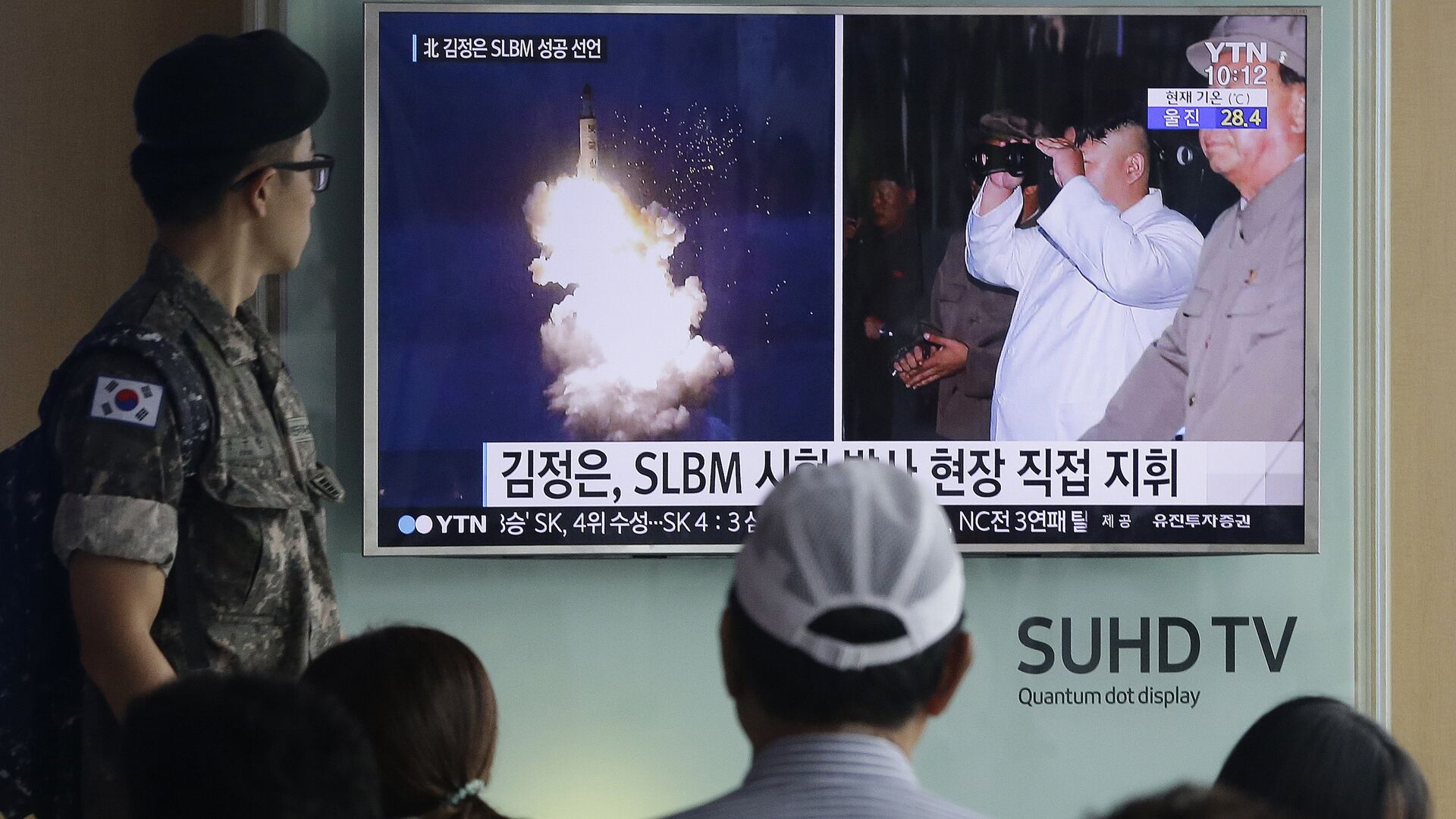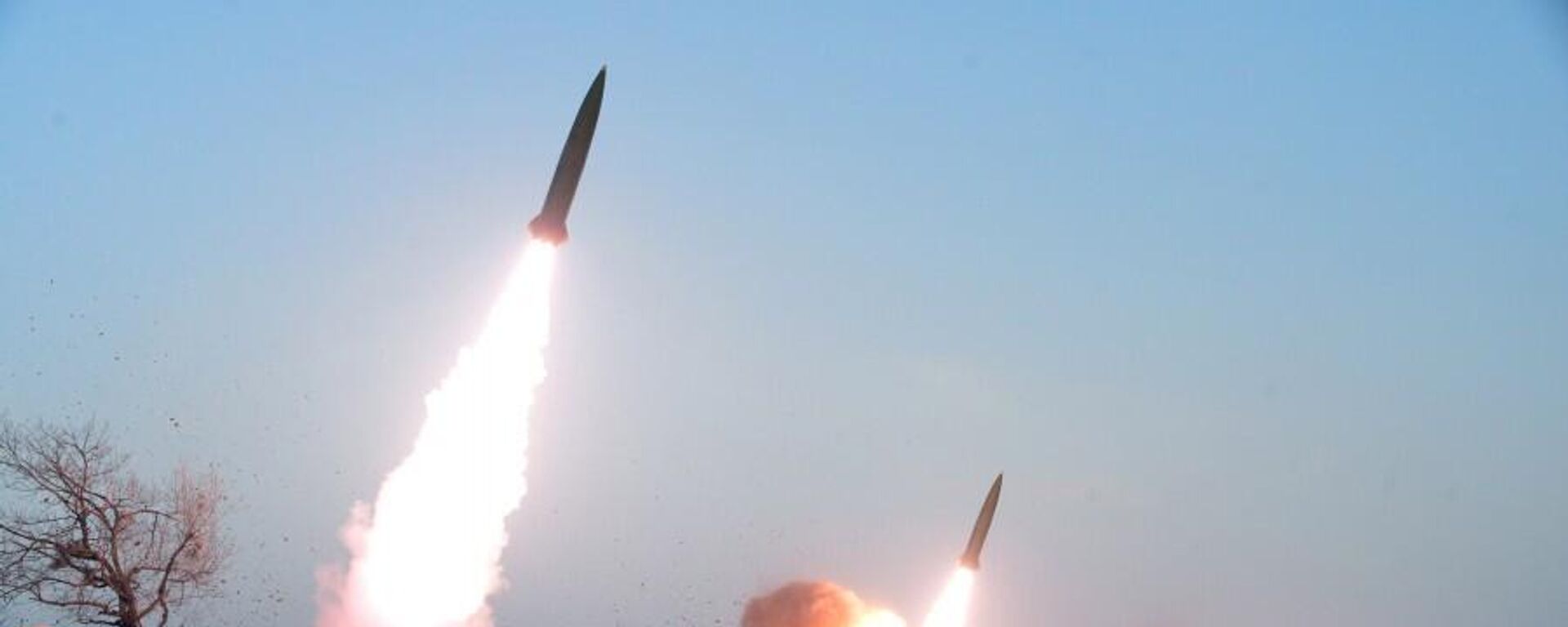https://sputnikglobe.com/20230324/photos-north-korea-tests-underwater-drone-that-spawns-super-scale-radioactive-tsunami-1108740110.html
Photos: North Korea Tests Underwater Drone That Spawns ‘Super-Scale Radioactive Tsunami’
Photos: North Korea Tests Underwater Drone That Spawns ‘Super-Scale Radioactive Tsunami’
Sputnik International
North Korea successfully tested a groundbreaking new unmanned underwater nuclear attack drone this week, local media is reporting.
2023-03-24T03:42+0000
2023-03-24T03:42+0000
2023-09-18T13:37+0000
asia
underwater drone
north korea
south korea
war games
missile tests
drone
https://cdn1.img.sputnikglobe.com/img/104608/43/1046084363_0:241:5000:3054_1920x0_80_0_0_cc2ad303ecd50f1985e3ff71f251900d.jpg
North Korea successfully tested a groundbreaking new unmanned underwater nuclear attack drone this week, local media is reporting."After cruising along an oval and pattern-8 course at an underwater depth of 80 to 150 meters in the East Sea of Korea for 59 hours and 12 minutes," North Korea’s Unmanned Underwater Nuclear Attack Craft "reached the target point in the waters off Hongwon Bay, with its test warhead detonating underwater on Thursday afternoon," local outlet KCNA reported Thursday.The drone in question is reportedly capable of directing a massive radioactive tidal wave towards the destination of its user’s choosing."The mission of the underwater nuclear strategic weapon is to stealthily infiltrate into operational waters and make a super-scale radioactive tsunami through underwater explosion to destroy naval strike groups and major operational ports of the enemy," KCNA explained.According to the North Korean outlet, the underwater nuclear attack drone "can be deployed at any coast and port or towed by a surface ship for operation."Not only did the test correctly estimate "all the tactical and technical specifications and navigational and technical indices of the underwater nuclear attack drone," it also "verified its reliability and safety and fully confirmed its lethal strike capability," the outlet reported.This week’s tests, which reportedly simulated an attack on a mock enemy port, took place as North Korean authorities sought to send a message to the West following South Korea’s announcement that they’ll be carrying out their largest-ever live-fire exercises alongside the US military in June.A statement by South Korea’s defense ministry described the military drills as just one of the country’s "various anniversary programs," which it said are focused on "realizing 'peace through strength' through action." The communique indicates the country intends to spend much of the summer demonstrating what it called its "overwhelming deterrence and response capabilities" towards its neighbor.But North Korean media denounced the provocative war games as a rehearsed invasion and an attempt to enact a mock "occupation" of the country.The latest test came days after North Korea carried out a series of ballistic missile tests in protest of joint military exercises between the US and South Korea. An earlier launch overseen by North Korean leader Kim Jong-un and his daughter involved a Hwasong-17 intercontinental ballistic missile.
https://sputnikglobe.com/20230313/north-korea-fires-two-ballistic-missiles-toward-sea-of-japan---south-korean-military-1108358827.html
north korea
south korea
Sputnik International
feedback@sputniknews.com
+74956456601
MIA „Rossiya Segodnya“
2023
News
en_EN
Sputnik International
feedback@sputniknews.com
+74956456601
MIA „Rossiya Segodnya“
Sputnik International
feedback@sputniknews.com
+74956456601
MIA „Rossiya Segodnya“
north korea, underwater drone, war games, south korea
north korea, underwater drone, war games, south korea
Photos: North Korea Tests Underwater Drone That Spawns ‘Super-Scale Radioactive Tsunami’
03:42 GMT 24.03.2023 (Updated: 13:37 GMT 18.09.2023) A report by North Korean media suggests the country has made another big leap in protecting its sovereignty from any potential external threats.
North Korea successfully tested a groundbreaking new unmanned underwater nuclear attack drone this week, local media is reporting.
"After cruising along an oval and pattern-8 course at an underwater depth of 80 to 150 meters in the East Sea of Korea for 59 hours and 12 minutes," North Korea’s Unmanned Underwater Nuclear Attack Craft "reached the target point in the waters off Hongwon Bay, with its test warhead detonating underwater on Thursday afternoon," local outlet KCNA
reported Thursday.
The drone in question is reportedly capable of directing a massive radioactive tidal wave towards the destination of its user’s choosing.
"The mission of the underwater nuclear strategic weapon is to stealthily infiltrate into operational waters and make a super-scale radioactive tsunami through underwater explosion to destroy naval strike groups and major operational ports of the enemy," KCNA explained.
According to the North Korean outlet, the underwater nuclear attack drone "can be deployed at any coast and port or towed by a surface ship for operation."
Not only did the test correctly estimate "all the tactical and technical specifications and navigational and technical indices of the underwater nuclear attack drone," it also "verified its reliability and safety and fully confirmed its lethal strike capability," the outlet reported.
This week’s tests, which reportedly simulated an attack on a mock enemy port, took place as North Korean authorities sought to send a message to the West following South Korea’s announcement that they’ll be carrying out their largest-ever live-fire exercises alongside the US military in June.
A statement by South Korea’s defense ministry
described the military drills as just one of the country’s "various anniversary programs," which it said are focused on "realizing 'peace through strength' through action." The communique indicates the country intends to spend much of the summer demonstrating what it called its "overwhelming deterrence and response capabilities" towards its neighbor.
But North Korean media denounced the provocative war games as a rehearsed invasion and an attempt to enact a mock "occupation" of the country.
"The hostile forces' anti-DPRK [Democratic People's Republic of Korea] war scenario – based on the deployment of huge nuclear strategic assets, the amount of forces involved in carrying it out, and the ensuing peculiar mode of war – urgently require the DPRK to make its entire armed forces gird themselves for an all-out war and bolster up its nuclear force both in quality and quantity on a priority basis," KCNA wrote.
The latest test came days after North Korea carried out a series of ballistic missile tests in protest of joint military exercises between the US and South Korea. An
earlier launch overseen by North Korean leader Kim Jong-un and his daughter involved a Hwasong-17 intercontinental ballistic missile.



